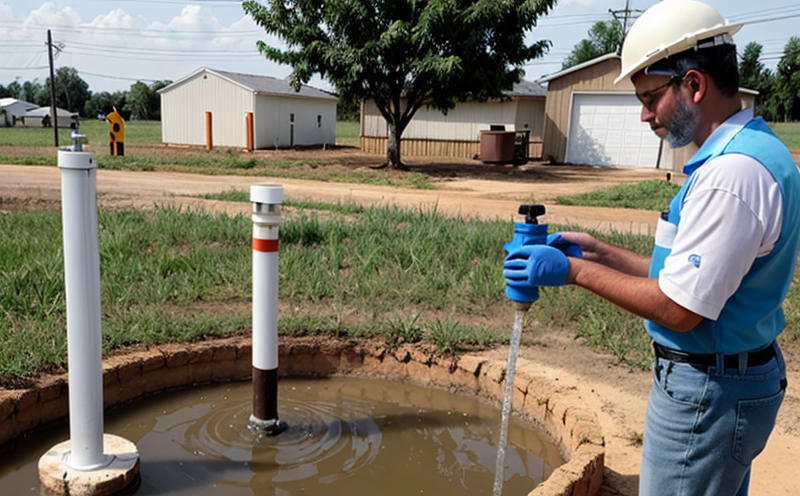EN 13506 Hydrocarbon Index Testing in Groundwater
The EN 13506 standard provides a method for determining the hydrocarbon index of groundwater. This test is essential for understanding the contamination levels and assessing environmental impact, especially in areas where petroleum products or other hydrocarbons have been released into the ground.
Hydrocarbons are organic compounds composed solely of hydrogen and carbon atoms. They can be present as natural components of soil and water but also as pollutants resulting from human activities such as fuel spills, leaks, and improper disposal methods. Groundwater contaminated by hydrocarbons poses significant risks to both public health and the environment.
Hydrocarbon contamination in groundwater can lead to various adverse effects including:
- Toxicity to aquatic life
- Harmful impacts on human health through ingestion or inhalation of contaminated water
- Degradation of soil quality and ecosystem balance
Given these risks, it is crucial for regulatory bodies, environmental agencies, and private companies to monitor groundwater regularly. The EN 13506 test helps in identifying the presence and extent of hydrocarbon contamination, thereby aiding in appropriate remediation efforts.
The methodology outlined in EN 13506 involves extracting water samples from the ground using specialized equipment, followed by analysis to measure specific parameters indicative of hydrocarbon content. These include:
- Total petroleum hydrocarbons (TPH)
- Solvent extractable organic matter
- Oil and grease content
The testing process is highly technical, requiring precise sample collection procedures to ensure accurate results. Samples must be handled with care during transport to the laboratory to prevent contamination or alteration of their composition.
Instrumentation plays a vital role in this testing procedure. Laboratories use advanced analytical tools such as gas chromatographs and mass spectrometers to perform detailed analyses. These instruments help detect even trace amounts of hydrocarbons, providing reliable data for interpretation.
The acceptance criteria under EN 13506 are stringent, ensuring that only compliant results contribute towards effective environmental management strategies. Compliance with these standards is mandatory in many regions around the world to protect natural resources and human health.
| Standard Reference | Description |
|---|---|
| EN 13506 | Method for determining the hydrocarbon index of groundwater. |
Applied Standards
The EN 13506 standard ensures consistent and accurate measurement of hydrocarbons in groundwaters. This international standard specifies the procedures for extracting, preparing, and analyzing groundwater samples to determine their hydrocarbon content.
| Standard Reference | Description |
|---|---|
| EN 13506 | Method for determining the hydrocarbon index of groundwater. |
Eurolab Advantages
At Eurolab, we pride ourselves on offering comprehensive and reliable services that cater to diverse industries. Our expertise in environmental testing ensures accurate interpretation of results and timely reporting.
- State-of-the-art laboratories equipped with cutting-edge technology for precise analysis
- Experienced and certified professionals who stay updated with the latest developments in analytical science
- A commitment to quality through ISO accreditation ensuring consistent high standards
- Comprehensive support throughout the project lifecycle, from initial consultation to final report delivery
Environmental and Sustainability Contributions
Hydrocarbon index testing contributes significantly to environmental sustainability by providing critical data needed for effective management of hydrocarbon contamination in groundwater. This information helps stakeholders make informed decisions about remediation measures, thereby protecting natural resources and public health.
- Reduces the risk of ecological damage from hydrocarbon spills
- Promotes sustainable practices by ensuring compliance with environmental regulations
- Aids in developing strategies for cleaner production processes within industries





